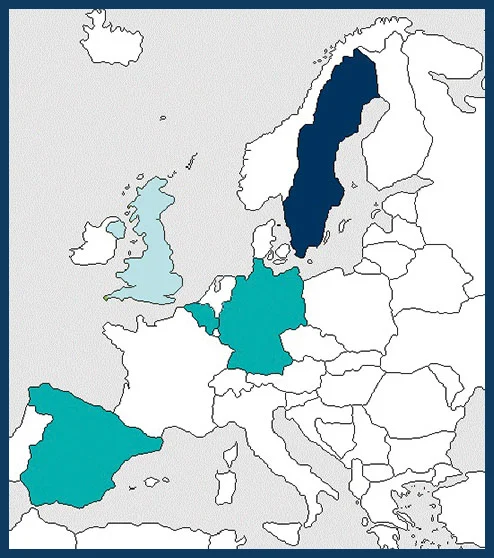01-2017 to 02-2020
€ 1,046,885
Prof. Sara Cousins
sara.cousins@natgeo.su.se
Stockholm University, Stockholm, SWEDEN (Coordinator)
Katholieke Universiteit Leuven, Leuven, BELGIUM
University of Regensburg, Regensburg, GERMANY
Institut Mediterrani d’Estudis Avançats Mallorca, SPAIN
NERC Centre for Ecology & Hydrology, Wallingford, UNITED KINGDOM

The anthropogenic threats of habitat destruction and climate change highlight the key role of dispersal in allowing species and populations to persist. Reduced dispersal among isolated populations also leads to population extinction and a lower chance of subsequent recolonisation, resulting in a reduction in biodiversity at local and landscape scales. The realised movement of organisms across land- scapes is determined by functional connectivity, which for plants occurs through the dispersal of seeds among habitat patches. The FUNgreen approach will link theory and practice through a new conceptualisation of functional connectivity for plants, which incorporates factors both dependent upon and independent of a landscape’s green infrastructure.
The FUNgreen project will investigate how the dynamic attributes of plant functional connectivity interact with green infrastructure in the maintenance of biodiversity and ecosystem services. Specifically, functional connectivity in fragmented landscapes will be compared with both high and low amounts of green infrastructure, and the role of active management will be assessed to enhance functional connectivity through migrating herds of cattle and sheep. Seed dispersal in these landscapes will be evaluated through genetic analyses, recruitment experiments and modelling. The effects of dispersal on biodiversity, genetic diver- sity and a range of ecosystem services will be investigated and used as the basis of predictive models which can help shape future landscape management.
The FUNgreen project will assess current, past and potential future levels of green infrastructure and functional connectivity in important grassland landscapes across Europe. Focus will be on semi-natural grasslands and comparison of functional connectivity in fragmented landscapes with both high and low amounts of green infrastructure will be conducted, as well as an assessment of the role of active management to enhance functional connectivity through rotational grazing by cattle and sheep. Seed dispersal ecosystem services (climate mitigation, water retention, landslide decrease, etc.) will be evaluated through genetic analyses, recruitment experiments and modelling. The effects of dispersal on biodiversity, genetic diversity and a range of ecosystem services will be investigated and used as the basis of predictive models which can help shape future landscape management and to aid planning for future green infrastructure.
Farmers and conservation managers will be part of the development of alternative modelling scenarios for improving functional connectivity to have economically realistic scenarios. Results from FUNgreen will be relevant to farmers, other grass- land managers, land owners, nature organisations and policy makers. Results and ideas from FUNgreen will be made available on a website and by uploading GIS- data and biodiversity data to open access repository such as Dryad for regional and national governments to use.